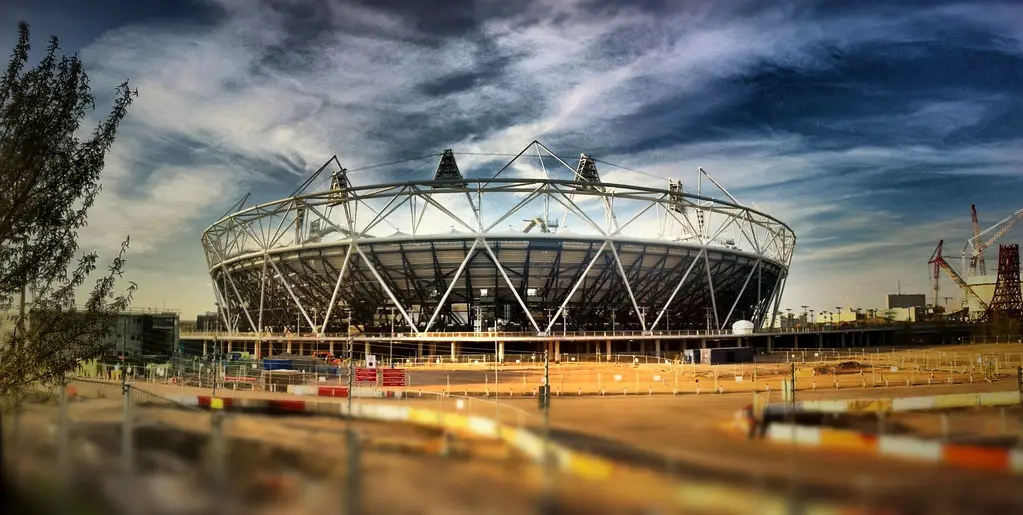The (South) American Dream: Argentina’s Pro.Cre.Ar and the Universal Desire For Suburbia
In developed countries, the dialogue relating to urban planning issues seems to follow a familiar tack. The status quo is represented by Surburbia; challenging this position is the “new urbanist” idea that cities should be remade to be denser and more walkable. There may be scads of practical benefits to the new urbanist model, but in a culture where home ownership is seen as the ultimate indicator of a successful life, selling new urbanism is about as easy as convincing a five-year-old at a birthday party to eat carrots instead of cake.
But what about countries that haven’t had the same magnitude of suburban development? Well, in the case of Argentina, they’re doing their best to catch up to the level of government-backed suburbanism that has become the hallmark of the first world. Last month, Argentine president Cristina Fernandez de Kirchner announced the launch of ProCreAr [es], a home loan program whose goal is to build 100,000 new dwellings across the country, nearly all of them single family homes.
There are several reasons for these programs, not the least of this is a real housing crisis. Developers are scared to build, while at the same time lower income Argentines are in some cases forced to live in the notorious villas for lack of available housing. Their search for a good place to live is also impeded by speculators, who buy massive quantities of houses (an estimated 340,000 in Buenos Aires alone) only to let them sit vacant, to be sold at a profit to others who will possibly let them sit vacant too.
A report at the Argentina Independent gives an idea of the scope of the problem:
“The figures spell it out: almost 1,000 villas miserias (shanty towns) and precarious settlements in the Buenos Aires metropolitan area alone; 40,000 inhabitants in just one villa close to the Jose León Suarez train station; four or five (exact number unknown) families living in that one improvised home next to Avenida 9 de Julio… According to Omar David Varela, a professor at the University of General Sarmiento, there is an approximate 3.5 million nation-wide housing deficit. The City of Buenos Aires and the Greater Buenos Aires area hold an approximate 14 million inhabitants of the nation’s 40 million. Official estimates show that, out of 4 million homes in this area, 1.25 million need some type of repair or extension to be considered up to standard, whilst 46,000 are beyond repair and need to be replaced.”
One of the goals of ProCreAr is to break through this impasse and, naturally, to boost President Kirchner’s popularity as well by giving the people what the government thinks they all want. And therein lies the dilemma. Even in countries like Argentina, where it’s more socially acceptable for families to live in apartment complexes and commute by bus, the dream of every family appears to be the same as in so many other countries: to own a house. Political parties, eager to gain public approval, tap into these dreams and, if successful, unwittingly turn dream into reality and ultimately necessity. Thus the impasse of Argentina’s shortage-and-shantytown dilemma is answered by another dilemma: that of first world megasprawl.
What exactly would the ProCreAr program look like in practice? At this point the centrepiece of the plan has been its financial component. The government-sponsored official website details specifically which financial brackets are eligible for which types of loan. Less has been said about the physical form this development will take. The financing spread gives separate prices for those who already own land and simply want to build a house there. In the case of those who don’t own land, the government plans to use land it currently owns for them to build on. While some of this land may be in urbanized zones, it’s difficult to imagine all 100,000 new homes built in such a way as to entirely avoid the characteristic suburban patterns of cities in countries such as the United States.
It should be noted that this isn’t entirely a bad thing; despite the obvious environmental and social downsides of the suburban model, they may still be better than the current situation in which so many people live in polluting and horrendously unsafe villas. It is also overly simplistic to say that a greater percentage of this new housing stock should simply be plopped into urban zones. Dense development, despite its environmental benefits, requires thorough government oversight and can easily fall prey to incompetent contractors, corrupt regulators, or irresponsible tenants in large apartment complexes – especially in countries like Argentina.
But widespread suburbanism is also a troubling sign for a country that prides itself on breaking from the plan norteamericano of housing development seen in the US. Argentine cities, despite their robust central cores, have seen considerable suburbanization in the past decades. While the population of central Buenos Aires has remained constant over the past decades, the suburban area has surged. In addition to the obvious environmental impact this portends, adding more suburban growth would risk jeopardizing the reputation currently enjoyed by most of the central city as a respectable place to live.
Despite this risk, Raúl Fernandez Wagner, urban planner at the Universidad Nacional de Sarmiento and co-founder of the group Habitar Argentina, points out that ProCreAr could actually be beneficial to responsible development close to city centers [es]:
“One issue that is nearly invisible, though at the urban level it is one of the most important, is the possibility this program would give to the development of new land. For example, someone who owns a lot would find it easier to build a residence for their parents in back or one floor above [their current house]. This is very interesting because it would permit the densification of many middle-density areas that are generally well served, close to train stations, etc. It would avoid overpopulating peripheral areas and is crucial in terms of ‘rights to the city’. That is to say, this program is conscious of the problem that the federal plan had, that, as has been shown in a study by Juan Pablo del Rio, 60% of dwellings in metropolitan areas… were constructed in the least suitable zones. Thus it is important not only to offer better housing but also a better city.”
Although this is only one interpretation of how ProCreAr would play out, it’s encouraging to see that this program is more than just a blank check for sprawl. In addition, we need to keep in mind that suburbs aren’t necessarily a bad thing. In fact, building good suburbs is essential to preserving the health of our cities, and this blog has covered several innovative ideas for better suburb development. But we can’t let suburb building come at the cost of preserving our urban centers. The ideas put forward by Wagner, among others, are encouraging. In addition, the federal government is to be commended for taking steps to mitigate the effects of suburban development, such as realizing improvements on Buenos Aires’s suburban train network.
The program has just recently opened to the public, and only time will tell how it will play out. The full extent of the construction – all 100,000 homes – is not scheduled to be finished until some time next decade. Depending on how it is planned out in the following years it could be a responsible way to help many Argentines get what they want and solve a pressing social issue. Or it could be a step toward environmental degradation and unchecked sprawl.
Drew Reed is an online media producer and community activist specializing in sustainable transportation. He lives in Buenos Aires.
Photo: Thomas Locke Hobbs


